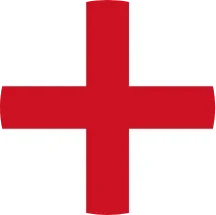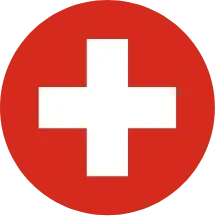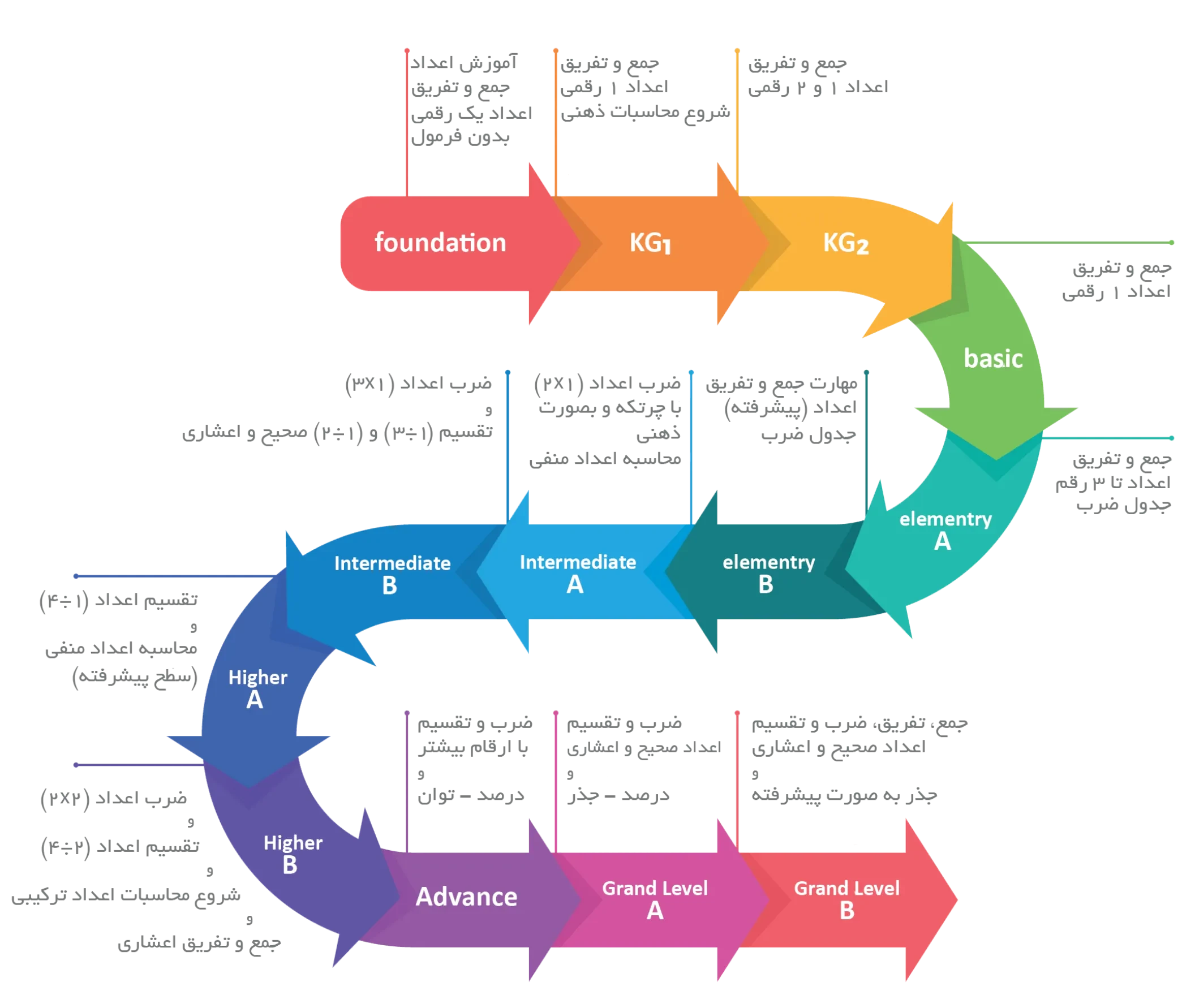The UCMAS mental and abacus calculation system employs an innovative computational approach utilizing the abacus, which simultaneously harmonizes the right and left hemispheres of the brain. This foundational framework enhances mental capacity and skills such as time management, concentration, and problem-solving abilities, which are essential for student success in all subjects and daily life.
This system consists of 10 main levels and 2 introductory levels. Learning each level takes three and a half months, with one 2-hour session per week. It is designed for students aged 6 to 8 and 9 to 13 who have the ability to read, write, and perform addition and subtraction with numbers from 1 to 9. This educational system includes unique tools and materials to facilitate the learning process accurately, including:
It is worth mentioning that the UCMAS mental development program not only aligns with the school mathematics curriculum but also complements it by teaching concepts and mental imagery using the aforementioned techniques.
The word abacus has Greek roots, derived from the word abax, meaning calculation board. According to historical findings, the first Chinese abacus was invented 500 years BC. However, the more advanced model, similar to the one we use today, has been in use since about 1300 AD in China.
An abacus is a tool for performing the four basic arithmetic operations (addition, subtraction, multiplication, and division) and, in its more advanced form, can also be used for calculating fractions and square roots.
Today, Asian shopkeepers still use the abacus for their calculations. Countries like Japan, one of the largest producers of modern electronic devices, are examples. One of the first things that catch the eye of any traveler to Japan is the use of abacuses by Japanese vendors. They quickly and skillfully calculate prices for customers using an abacus.
The abacus consists of a frame (made of wood or plastic) with several vertical rods embedded in it. Each rod holds several beads that move up and down to calculate figures. A horizontal rod also divides the frame into two sections called the upper and lower decks.
To use the abacus, place it on a flat surface like a table or on your lap, and move all the beads on both the upper and lower decks away from the horizontal rod. The numerical value of each bead in the upper deck is 5, and in the lower deck, it is 1. When beads are moved towards the horizontal rod, they are considered counted.
UCMAS boasts an extensive global network with a presence in 82 countries spanning 6 continents, operating more than 6,000 active centers worldwide, and establishing itself as a truly international educational program for mental arithmetic and brain development.


















































The above packages are given to you depending on your level at the time of registration at ucmas.

The Noandishan Institute has taken a significant step in enhancing students' academic levels, encouraging study, and fostering a sense of competition by organizing UCMAS competitions at provincial, national, and international levels.
In the provincial stage, students from each province compete against each other at various levels. The winners of this stage advance to the national competition, where they strive for the top titles in a highly competitive environment. The national champions then earn the honor of participating in the international competition, where they compete with outstanding students from around the world on a global stage.
The UCMAS competitions go beyond a simple contest; they provide a rich experience for students. These competitions offer an opportunity to strengthen mental calculation skills, concentration, memory, problem-solving abilities, self-confidence, and self-esteem. Additionally, UCMAS competitions motivate students to learn more and achieve honors at national and international levels.
Besides the mentioned benefits, participating in UCMAS competitions is an opportunity to meet exceptional students from across the country and the world, forming new friendships. These valuable experiences broaden students' perspectives and enhance their social skills.
The UCMAS competitions are a gateway to honor and provide students with the chance to unleash their talents and reach the pinnacles of success.
Some examples of the achievements of Iranian students in UCMAS competitions:
These achievements demonstrate the talent and capability of Iranian students in mental calculations and their strong presence in UCMAS competitions, promising a bright future in this field.